The Music of Baths
The public bath, or “sento”, has long been a traditional part of the Japanese lifestyle, though in the modern metropolis its role has been declining. With most homes now coming with their own fitted sophisticated baths and showers, the time devoted to bathing in contemporary Japan is almost certainly shorter than for previous generations, and more and more a private or solo experience.
The sento was formerly a central part of a community, where local people would gather and socialize daily. In recent years many art projects have attempted to utilize the public bath as a site for events and creativity. “Art 2010 Tengoku”, for example, was a mini art fair held in a sento, while Furo Roku (“bath rock”) is a music festival in a bathhouse in west Tokyo. And most famously, for many years the leading gallery SCAI THE BATHHOUSE has occupied a converted sento building in Yanaka.
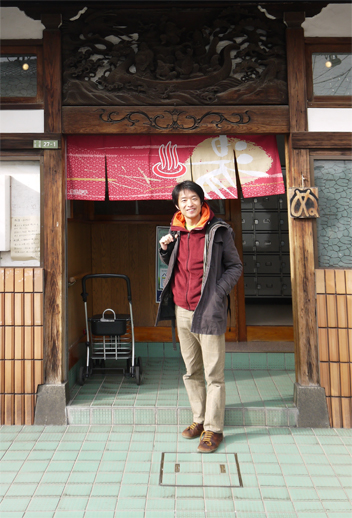
Nomura in particular has been running a project that he has conceived over two years, “furo-fessional concert”, a play on the words “professional” and “furo” (bath). In other words, even though you’re not a pro you can take part in this bath time “orchestra”, that even includes drumming on the tubs! At the well-known Takara-yu public bath, known for its view of a magnificent Japanese garden, Nomura will hold his unique performance using the bathtubs, aided by fifty musicians recruited from the general public. TABlog went along to take a look at one of the rehearsals for the performance and to interview Nomura.
“Public Bath Concert” Rehearsal Report
The venue for the concert is the Taraka-yu sento, which long has been tipping its toes into all manner of atypical activities, including art exhibitions and installations, and jazz concerts. It lies in the middle of a residential area, just under a twenty minutes’ walk from Kita-Senju Station that passes through a few old shopping arcades.
Today was just a practice and the people gathered at the sento were twenty people from Adachi ward, who got to know about the project online or through word-of-mouth.
After hearing about the project from Nomura they were now ready today to have their first practice in the baths! Before changing into swimwear and heading to the tub they gathered round and practised the humorous song that Nomura had composed for the concert. The lyrics are full of puns, which Nomura previously showcased at his “mixed bathing chorus” work at the Fukuoka Asian Art Triennale.
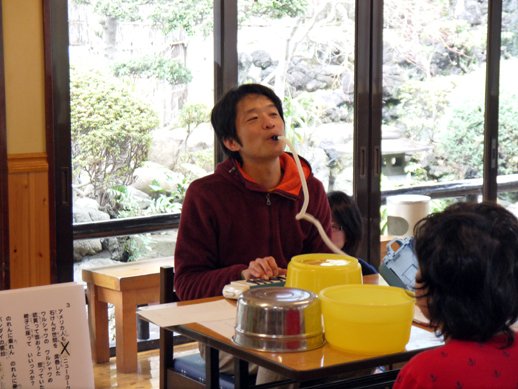
After warming up their voices, it was time to get changed and go into the bathing area. Here the participants practised making sounds through drumming and stroking the water. Divided into three groups, they made alternating sounds through their hands, the bath water and the tubs. The groups also talked among themselves and all kinds of sounds and timbre were created, which also resonated very well thanks to the high ceiling. The boys and girls were also separated into separate baths. They would listen to and compare each other’s sounds, before then trying to imitate them and experiment with different sounds.
Where did you get the idea for holding a concert in a public bath?
Nomura: I love baths and sento public baths. I like the resonance of sound in the space of the sento. Although sento are getting less and less, because I heard that in Senju there were lots I thought that I wanted to do this. I’ve previously done a music event in a bath once in the past, in Fukuoka. The sound of “playing” the bath water, in other words, the splish-splash sound of the water, is really rich, and the sento is an environment where you can hear that sound very well.
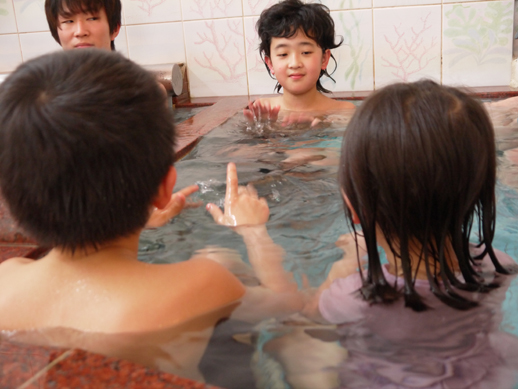
And this concert is the first in your “Senju Dajare Music Festival” series.
Nomura: Yes, it’s a project I’ve been planning for two years. Dajare [puns] play with Japanese words with the same sound. It is viewed especially with disinterest by the contemporary art world and is not something much in the limelight. This is just my personal opinion, but “old men” [Oji-san], the generation who make these puns the most, don’t tend to go to art events, and it seems the connection between contemporary art and Oji-san is quite weak. Thinking that I wanted to make an event that could connect many different people together, including Oji-san, I introduced dajare puns. With a dajare, just through the same pronunciation of words, you can make a connection to something that is unrelated. For the song that I will unveil at the concert, in the lyrics I use words that normally are not connected except through puns. In the “orche” of “orchestra” we can connect with oke [“tub” in Japanese], though the words are really unrelated.
What kind of concert do you want to make?
Nomura: I want people to experience being surprised by sound. If I wanted to make an event where the sound and performance are good, and the audience applauds and just says, “That was nice” or “That was fun” – well, that’s just a relationship between performers and audience. But I think that unless the audience think that they are “involved”, then I can’t call the event a success.
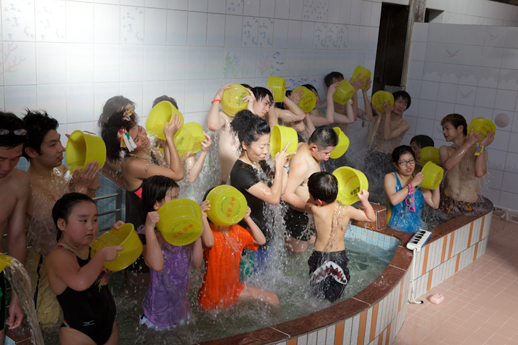
What do you expect from the performers?
Nomura: If they have some fun, that will be the best thing. For me this is a job but for the performers, I want them to be involved and to enjoy themselves. If it was just about showing my own work I would call the event “Makoto Nomura Solo Concert” or “Makoto Nomura’s Bath Concert”, right? I want to make an event where both the performers and the audience participate.
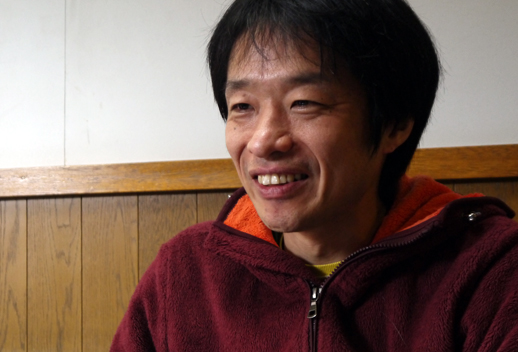
Nomura: I’ll be happy if the people watching like it, or think about what they would do if they were making the sounds. Also, it’s a concert where you can have an experience that is mysterious. If you go and see it, you can see drummers and bass musicians, but a concert where you can only hear the guitar and vocals is not normal, is it? But the event is in a public bath so you can only see half the performers: if you sit in the men’s bath, you cannot see the women. I want people sitting in the men’s bath to experience listening to the sound coming from the women’s bath, and imagine how that sound is being made. Well, please come and see for yourself!
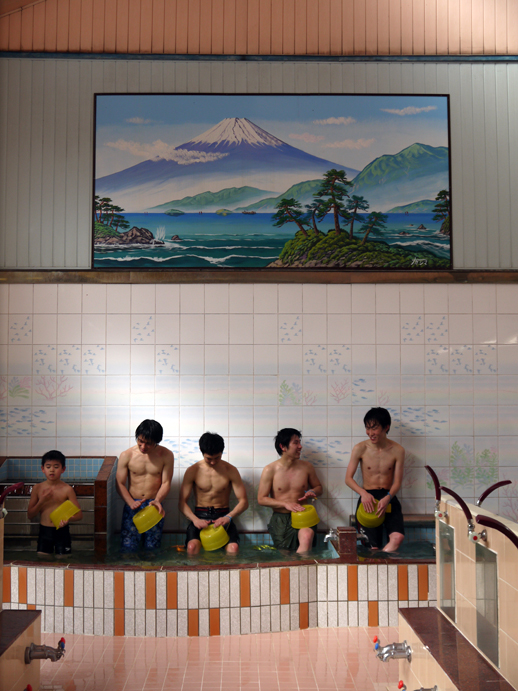
Art Access Adachi 2011 “Oto-machi Senju no En”
“Oto-machi Senju no En” makes connections (“en”) people with other people, with places and with art and more, though the theme of sound (“oto”). Art Access Adachi is based in the Adachi area of Tokyo, and operates art projects where residents and artists co-operate together.
Learn more:
http://aaa-senju.com
This article was adapted from a translation of the original Japanese article, written by Chisai Fujita.
Tokyo Culture Creation Project
Tokyo Culture Creation Project



